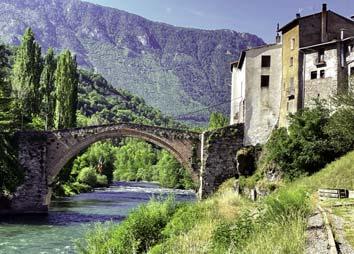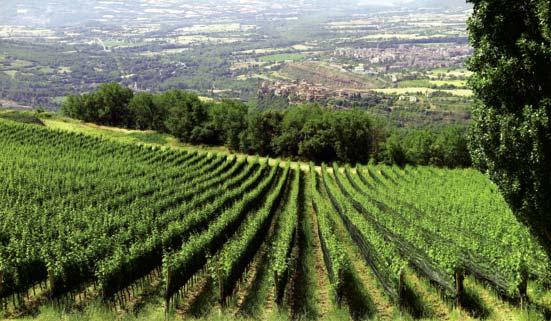
21 minute read
Curacao
Feeling Curaçao
Article and photography by Steve Gillick
Advertisement
After visitors land at Curaçao airport, it takes only a few minutes to discover the slogan of the Curaçao Tourist Board, “Feel it for yourself.” And once they experience the people and the culture, along with pristine beaches, soothing turquoise waters, exhilarating national parks and an incredible culinary scene, visitors appreciate what it means to personally ‘feel the vibe’ on this exciting island.
It begins on arrival when you are honored with the Papiamentu (the language of the Dutch Caribbean) greeting, “Bon Bini na Dushi Curaçao”. “Welcome to lovely, beautiful, wonderful, Curaçao”. Dushi is one of those all-encompassing endearments. When you call someone Dushi, you really mean “sweetheart” or “sweety”. The giant “Dushi” sign can be found near the equally giant “Curaçao” sign in Queen Wilhemina Park, in Punda, the historic core of the capital city, Willemstad.
The freewheeling idea of ‘feeling it for yourself’ involves all the senses. When I mentioned the attraction of all-inclusive resorts to one of the locals, she told me about Westpoint, and asked, “What can be more all-inclusive than a holiday where you have beautiful green forests, caves, the unrestrained power of nature, plus birds, beaches, great food and sunshine”? Westpoint is a 45-minute plus drive from Willemstad, depending on how many times you stop along the way to breathe in the gorgeous scenery. After crossing the Queen Juliana Bridge, spanning St. Anna Bay, we headed west, past the Three Brothers; three sedimentary hills popular with hikers and climbers.
Kas di Pal’i Maishi outdoor museum provides a glimpse of a 130-year-old slave house and insight into how many people lived on the island up to the 1950s. Evil spirits were kept at bay with a triple-row cactus fence, and if that didn’t work, the spirits would become ensnared in the curled feathers of the chicken, kept in the coop by the entrance.
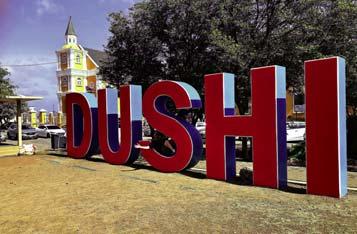


Photo: World Traveler library

Interactive activities on our visit included carrying a pail of water on the head, and singing the gossip song “Kalim Bambeya”. This would have been sung by the wife while washing clothes and at the same time warning the neighbors that her husband was drinking and causing trouble by spying on them!
Curaçao has two national parks in the West end. Christoffel National Park surrounds Mt. Christoffel, the highest point on the island at 372 meters (1220 feet). The park is known for hiking, climbing, and nature (flowering plants, bromeliads, orchids, reptiles, mammals, and many of the 263 species of birds on the island).
We visited the second National Park, Shete Boca (‘seven mouths’, or ‘seven sea inlets’), and headed straight for Boca Pistol. With a sound like the crack of a fired pistol, the wild waves dramatically crash into this rocky inlet Our visit to Grote Knip Beach (one of two public beaches at Playa Kenepa) was much more serene. In 2017 this beach was included in Passport Magazine’s list of 25 of the most stunning beaches in the world. The picturesque rocky coastline hugs a small bay where turquoise waters blend into a white sand beach. And for nature lovers, the trees near the beach are home to the Troupial or Orange-breasted Oriole, the National Bird of Curaçao, as well as Yellow-breasted Orioles and Bananaquits. In addition, iguanas and crabs scamper amongst the rocks at the water’s edge. For relief from the sun, aside from a swim, indulge in a refreshing Yellow Watermelon smoothie.
And on that note, foodies will be enthralled with the mouth-watering food in Curaçao, especially the tuna! Our first lunch was at Restaurant & Café Gouverneur de Rouville, in the Otrobanda district of Willemstad. The Tuna Poke showcased large chunks of superfresh tuna. So good! Another lunch stop at Brisa do Mar – Pop’s Place, offered perfectly grilled, pepper-crusted Tuna Steak.
Number Ten is one of the more popular places in the country. Liberty Suares, the owner noted “It’s more than just a restaurant, it’s an experience. It’s the setting, the vibe. Sitting outdoors, in the city centre. We wanted to bring something to Curaçao that will help the island grow”. Number Ten features great service and delicious, fun food. The Tuna Tacos are one of the star items on the menu!
We experienced a memorable dinner at BKLYN Gastrobar. Martin and Jessica van Ast, the owners, acknowledged that BKLYN fit into the diverse nature of Curaçao with foods that combine French, Mediterranean and Asian cuisine. As an example, Martin described the outstanding dish I had ordered; “Pan ku Patu (which is Papiamentu for Bread with Duck), is a brioche bun from a local artisanal bakery, with homemade kimchi, duck confit and Chinese 5 spice mayo”. I should mention that the shared plates of crispy coconut prawns, and Bao buns with tuna, kimchi, and passionfruit, were nothing short of addictive, as was the dessert of Banana For something totally different, the oldest bar on the island is the Netto Bar, famous for Green Rum. Our group explored historic Willemstad on an electric scooter tour. It was a bit stressful for this writer, who had only ridden a scooter once before in 1998! However, the Green Rum was the magic elixir to soothe my nerves! It was spicy, minty, and very tasty!
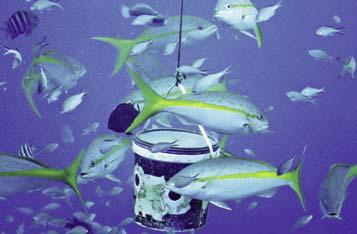

Another unique bar is located in the Ocean Encounter area of Willemstad. This neighborhood is popular with scuba divers and snorkelers. The Ocean Lens attraction allows visitors to spy on the underwater lives of Yellowtail Snappers, Trumpetfish, Smallmouth Grunts, and more. And the area is also home to the 4th largest submersible center in the world. As Barbara van Bebber, the Manager told us, “These are not glass-bottom boats! We go to unknown territories to discover the unknown depths of the sea”. A short walk away is Lionsdive Beach Bar (Chill & Grill), where upward of 1200 wooden signs enhance the drinking atmosphere. Try an icecold Brasa Gold Beer with lime.
And Curaçao offers more! We visited the Botanical Garden (Den Paradera) of Dinah Veeris and the nearby Aloe Plantation, to learn about natural healing plants. We sampled Blue Curaçao liqueur and then made our own cocktails at Landhuis Chobolobo. And if time permitted, we would have visited one of the Flamingo Sanctuaries, wandered through the Hato Caves, and spent more time in the UNESCO World Heritage center of Willemstad. But this was only the first visit, so there are lots of things to do next time!
Feeling the Curaçao vibe extends to culture, history, beaches, food, and nature. It’s a very energizing and uplifting experience.
www.Curaçao.com

20 Years Replay Winter 2013 The Holy Varanasi


Article and photography by Michael Morcos

To experience the heart of Indian culture, travelers often make a pilgrimage to the holiest and oldest city inside this massive country. Varanasi has one of the most deep and complex histories stemming from it’s involvement with the sacred Ganges River that runs through it. Most people never forget going to this place, as it’s a complete bundle of antique architecture, seas of people and the scent of spice. It can get overwhelming, but guests who see India first hand need to simply go with the flow and discover the welcoming and exotic nature of Varanasi. I spent much of my time simply with eyes and mind wide open, allowing me to indulge in the holy temples, beautiful river scenes and historical hotspots in the City of Lights.
The spiritual side of Varanasi
As in many parts of India, the local people are religious and have adapted philosophies from Hinduism, Islam and Buddhism. In particular, those who follow the Buddhist faith find Varanasi to be one of the holiest places in the world. Many believe this so strongly that they think if a person who has passed away and is incinerated in the city, they will quickly reach Nirvana and leave the ongoing cycle of life and death.
Buddhism reigns supreme
While Hinduism and Islam are the biggest majorities of religion in Varanasi, this site is where Siddhartha Gautama gave his first sermon on what it takes to follow Buddhism. Many of his believers travel to Varanasi and its suburbs to walk the footsteps of their prophet, meditating further on their beliefs. The preaching of freeing oneself from suffering and attempting to reach a higher level of understanding is cherished by thousands, especially many of those who call Varanasi home.
I journeyed to a Buddhist conclave in the city, where theses faithful individuals gather to discuss issues from present day and how to walk through life more closely with Buddhist tradition. It gave insight into what this religions hold valuable and how it’s managed to remain a significant influence in a predominantly Hindu and Islamic city.
An early morning boat ride on the Ganges
Many pilgrims and travelers who are able to rise early in the morning are rewarded with a spectacular sunrise. The holy environment has an almost palpable spirituality, especially when the early risers are just starting to go about their day along the coast and in their boats. While the water is not clear or aesthetically pleasing, knowing how much history and reverence surround this waterway makes it beautiful in a memorable way. The buildings, residential areas and holy temples that line the river are all part of the ambiance that gives Varanasi an exotic and unique allure.
While somewhat morbid, one of the most interesting things to see while peering onto the shore is the places that cremate lost loved ones. It is common practice to allow bodies to be burned with special wood to help them reach Nirvana and their second life more quickly. Piles of flames could be viewed from the boat, while small bits of ashes sometimes flew into the air from the process. Life in Varanasi tends to revolve around the Ganges in a dutiful way, from washing small children
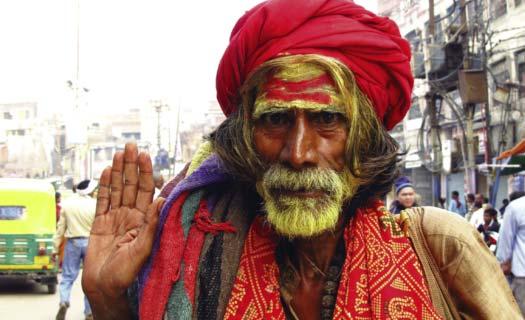

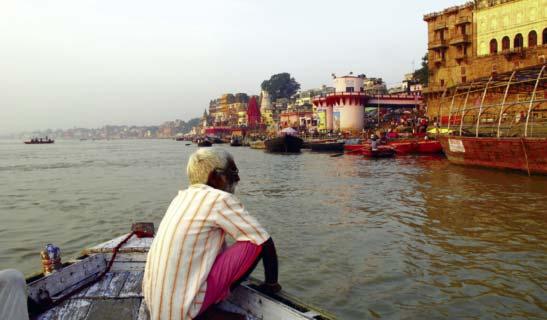
Gliding along the Ganges was a thrill, but I enjoyed even more staying on shore and visiting this sacred area. A ghat in India is a set of stairs that lead straight into a waterway, used by locals and tourists to sit on, wash clothes and bathe, bless themselves or meditate. Oftentimes special festivals and celebrations take places at these ghats as well to honor the dead and pay homage to Hindu gods. The Dashashwamedh Ghat is near the Vishwanath temple and is one of the most popular and impressive looking ones on the river.

Nightly ceremony on the Ganges
Everyday, a group of priests participate in a ceremony meant to honor various deities, including Surya of the sun and Angi of the fire. This “Ganga aarti” event happens every night and is a sight to see, complete with smoking incense, chanting, singers and traditional movement. Hundreds come out to see the spectacle that looks especially inspiring after nightfall with the starry night sky above.
However, the tranquil and mystifying ambiance was interrupted by a lost cow. These animals in India are considered sacred and are permitted to wander around many public areas, often disrupting every life, especially in urban areas not equipped for farm creatures. A little chaos ensued and the audience ended up being quite distracted by this one ton animal. The amusing turn of events truly made my visit to the Dashashwamedh Ghat a once in a lifetime happening.
A trip to the Sarnath museum
Due to the large population in Varanasi and throughout the country, sometimes artifacts and old archaeological sites can easily get damaged. Officials do what they can do preserve things once they are discovered, which is evident at the Sarnath Museum in town. I learned this site is both a walk-through attraction as well as a place where there are ongoing excavations. I first walked through the outdoor areas to see the protected buildings and monuments, then made my way inside to view more than 6,000 artifacts and sculptures collected in and around the city.
The main piece and focal point of the archaeological survey is the Ashoka pillar. This piece is so important to the people it is on the Indian currency coins. Part of the pillar remains indoors in the museum to keep it preserved, while another piece is in the excavation area. This structure is part of a series erected by Ashoka the emperor around 240 B.C.
The Dhamek Stupa at night
This city never seems to sleep, as tourists tend to check out attractions at all times of day. I loved this beautiful temple, especially in the quiet after sundown. The temple is very large and staggering to see when standing at the base of its giant main building. During the pilgrimage of Buddhists, this is also one of the most prominent spots to pay respects to for its history and spiritual setting. Even if visitors are not interested in Buddhism, they can appreciate the intricately designed floral carvings and pretty atmosphere.
The religious site of Bodh Gaya
Buddha travel throughout Varanasi and gave speeches, lives and worked at various temples. But where he was said to have reached enlightenment is in this sacred space. People who practice Buddhism put Bodh Gaya on their list of the top four places to pilgrimage to during their lifetime. Since travelers from all over the world have been heading here for the past 2,500 years, it is easily now one of the holiest locations to witness.
One of the highlights was going to the most amazing Mahabodhi Temple, or stupa. The incredibly tall structure and the vast compound was saved from the Moguls, who destroyed all Buddhist temples in the past, by being intentionally buried in ground for centuries. This story alone made me want to see it in person for myself, and the trip to Bodh Gaya was well worth it. The temple is so majestic it was honored as a UNESCO World Heritage Site.
No matter one’s personal religion or lack thereof, a visit to the holy city of Varanasi can be a fantastic way to understand the inner workings of India’s people and their unwavering faith. For centuries people have said that whoever lives in the city will reach eternal salvation. Even though I was only passing through, perhaps a little bit of that devotion and love rubbed off on me too and I’ll be a better person because of experiencing one of India’s most fascinating destinations.



www.incredibleindia.org

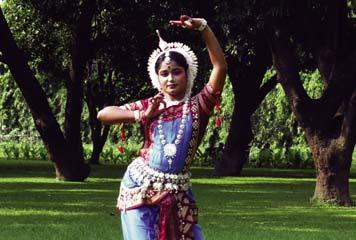
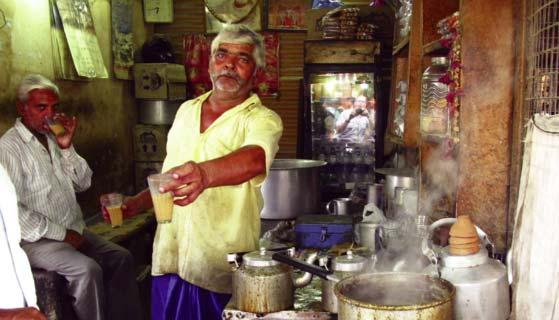

The grand tour of Catalonia literally covers this entire magnificent region of Spain. When seen from a map, Catalonia looks like a triangle, and a proposed road trip by the Catalonia tourism office covers all corners of this region. The route is made of five sections with a total driving distance of over 2000 kms. Visitors can choose a route that can be completed in as short as a week or the entire route which will take much longer as there are many points of interest to be taken in.
On this amazing journey, we would concentrate on the most northerly sector and would find ourselves in the beautiful mountain region of the Pyrenees. Here we would explore the Romanesque art of the region, visiting many churches and monasteries as well a historic castle, a national park, wineries, cheese makers, stay in beautiful hotels, taste some of the best foods of the region and take part in a oneof-a-kind comedy theatre show.

Cheese Heaven
Romanesque Art
Romanesque architecture was evident throughout these parts of the Pyrenees, and the style of medieval Europe that later developed into the Gothic style. We would see this in almost every city and village we visited. This beautiful style was used over a millennium ago, and the buildings were built from locally sourced solid stone that has withstood the test of time, while the interiors were richly decorated with fabulous artwork of the day.
The Pyrenees
The Pyrenees stretch all along northern Spain from the Atlantic Ocean to the Mediterranean and separates the countries of France and Andorra from Spain. This incredible mountain range is sparsely populated and are a fantastic playground for international and Spanish tourists looking for a unique cultural experience, exceptional views and four-season outdoor activities including winter fun in Alpine and Nordic skiing. When compared to the Alps, these mountains are much less traveled, meaning far fewer tourists while offering an authentic local experience.
Seu d’Urgell
One of the oldest in Catalonia, the Seu d’Urgell Cathedral is a shining example of its kind. We were taken aback by its rustic beauty and the collection of extensive and fascinating artifacts. We also enjoyed the Diocesan Museum which is built within the old Casa del Deganat and right down the way from the cathedral. It has a magnificent collection of art objects, encompassing the 10th-18th centuries, with paintings, sculptures, carvings, precious fabrics, liturgical ornaments, and so much more. Visiting these two treasure troves is a must for any fan of art and architecture.
Calling all cheese lovers, Tros de Sort, a small Pyrenees cheese producer, does it all on a micro-level and has something for every taste. Having their own milk farms, cheese production, a retail store as well as exports to domestic and international markets, there is a multitude of selections on offer. A short visit to this wonderful cheese maker had us trying seven different locally produced cheeses made from both cow and sheep’s milk, in a variety of textures: both fresh and aged cheese as well as in soft, medium and hard cheeses. The samples served with different wines, bread and crackers were absolutely delicious and rival the best cheeses found anywhere in the world.
The National Park

Another glorious day in the Pyrenees and another incredible dimension to Catalonia. The official name of this park is a tongue twister and more so for a foreigner. I would refer to call it as ‘the national park’ but is officially known as Parc Nacional d’Aigüestores I Estany de Sant Maurici. A visit here would bring us to a world of delights: fresh air, crystal clear water and unbelievable sights.
In the late afternoon, we would grab a Range Rover ride upwards towards the heavens where we would be greeted by a family of deer grazing in the woods. To the horizon were numerous mountain peaks while right in front of us was a magnificent mountain lake. We would trek along this lake passing through a beautiful forest path that brought us to the amazing Cascada de Ratera waterfall that descended from nowhere. I would find out that hidden high above us was another mountain lake and that there are more than 200 mountain lakes in this park. Needless to say, we were in peace and harmony with the natural surroundings. This was an essential Pyrenees moment for me and felt I was living in a glossy postcard. Hiking
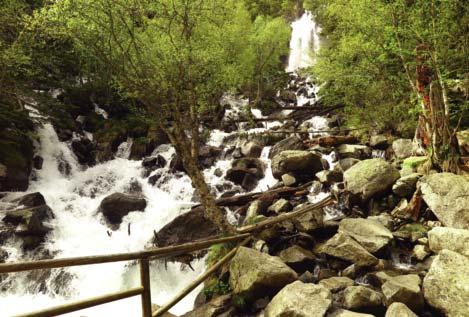
see following page


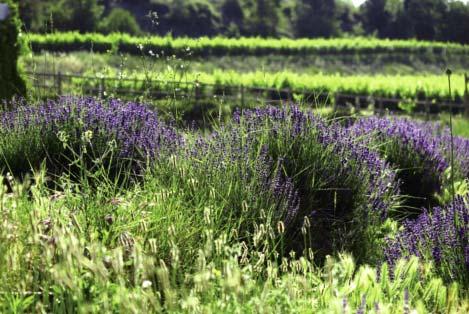

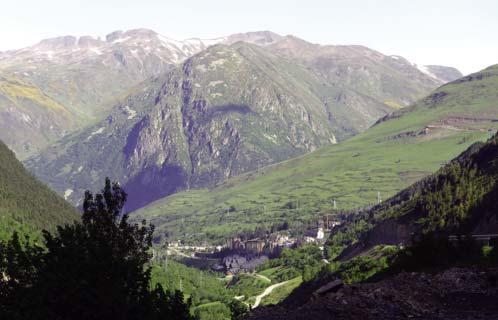
Sant Climent de Taüll




George Lucas meets Sant Climent de Taüll! As our visit to this beautiful historic church, a UNESCO World Heritage site, we noticed some faded artwork upon the ceiling and walls of the altar. What followed was another first. Once we were set, the room was darkened, and four high tech projectors (with video mapping technology) lit up the ancient artwork recreating the wonderful, original artwork that once adorned these very walls. So true and accurate were the colors of these projections that I felt I was transported to a millennium ago. The original paintings, that date from the 12th century, are now kept at the National Museum of Art of Catalonia (MNAC) in Barcelona. This is a bucket-list destination for any fan of Catalan Romanesque paintings.
Mur Castle
A national treasure, this well-preserved castle is one of the best examples of civil architecture from the 11th century. The Castle of Mur can be enjoyed through a guided visit and guests can investigate the tower, walk on the top of the battlements and enter some rooms. The walls themselves offer some very beautiful views of the surrounding cityscape and lands. As a bonus, visitors can check out the Church of Santa Maria del Mur, a beautiful building in its own right. It is a great afternoon trip to make and worth the time.
The Castell de Mur performance
Live performances, theatre and comedy could not have gotten better than on this day. Imagine three different stages: one with a centuries-old fortress as a backdrop, a beautiful old Romanesque church and a valley rich with agricultural fields and olive trees and you already have a setting for an amazing stage. The threepart performance took place on rotating bases, where the audience moved around to the following stage. They Comediants Company, a group of actors/comdidienats which are very popular with the Catalan, has as many as 50 actors put together a play that is performed every year in different Catalonia locations.
Although the play was performed in Catalan, a language I do not understand, the animation of In all this was a fantastic and memorable experience as the talented actors who were dressed in period costumes dazzled the audience on the three different stages. By chance, the following morning we would meet up with these great actors in the breakfast room of our hotel and reminisce about their stellar performance. I was amazed by the devotion it took to practice and prepare the whole year long for a handful of shows over a weekend.
Castell d’Encús Wine Cellar
Unique is the best way to describe this winery after having visited many different wineries around the world and several in Spain. High on a hill, with a spectacular vista of the valley below, the present location of Castell d’Encús was once abandoned and lost back to nature. Present owner Raul Bobet saw this as an opportunity to fulfill a long dream to create wines made using a method that was practised for centuries and was lost to modern technology.
Monks once used a method where they would create large size wine vessels using the existing landscape; they literally dug into rocks to make a cavity big enough to swallow a man that was used to crush grapes and then produce the juice used to make the wine. Castell d’Encús, a boutique wine house, produces a portion of this labor-intensive process to make its truly unique wines. This is technique is something I have never seen or heard of, and from the wine tasting, and the natural methods using the yeast from the terroir, I can truly say there was a difference in the taste and smell of these beautiful wines.
As with all great trips, there is way too much to see and do but never enough time. This was the case when touring the Catalan Pyrenees. On this trip we marveled at the landscape, the history and architecture of the Romanesque buildings and took in a small piece of the gastronomy and wines and all in their natural settings. This four seasons paradise is a must-see destination, and I will return, hopefully soon, and maybe during the winter season as this amazing destination becomes a skier’s paradise.
https://grandtour.catalunya.com/en/
